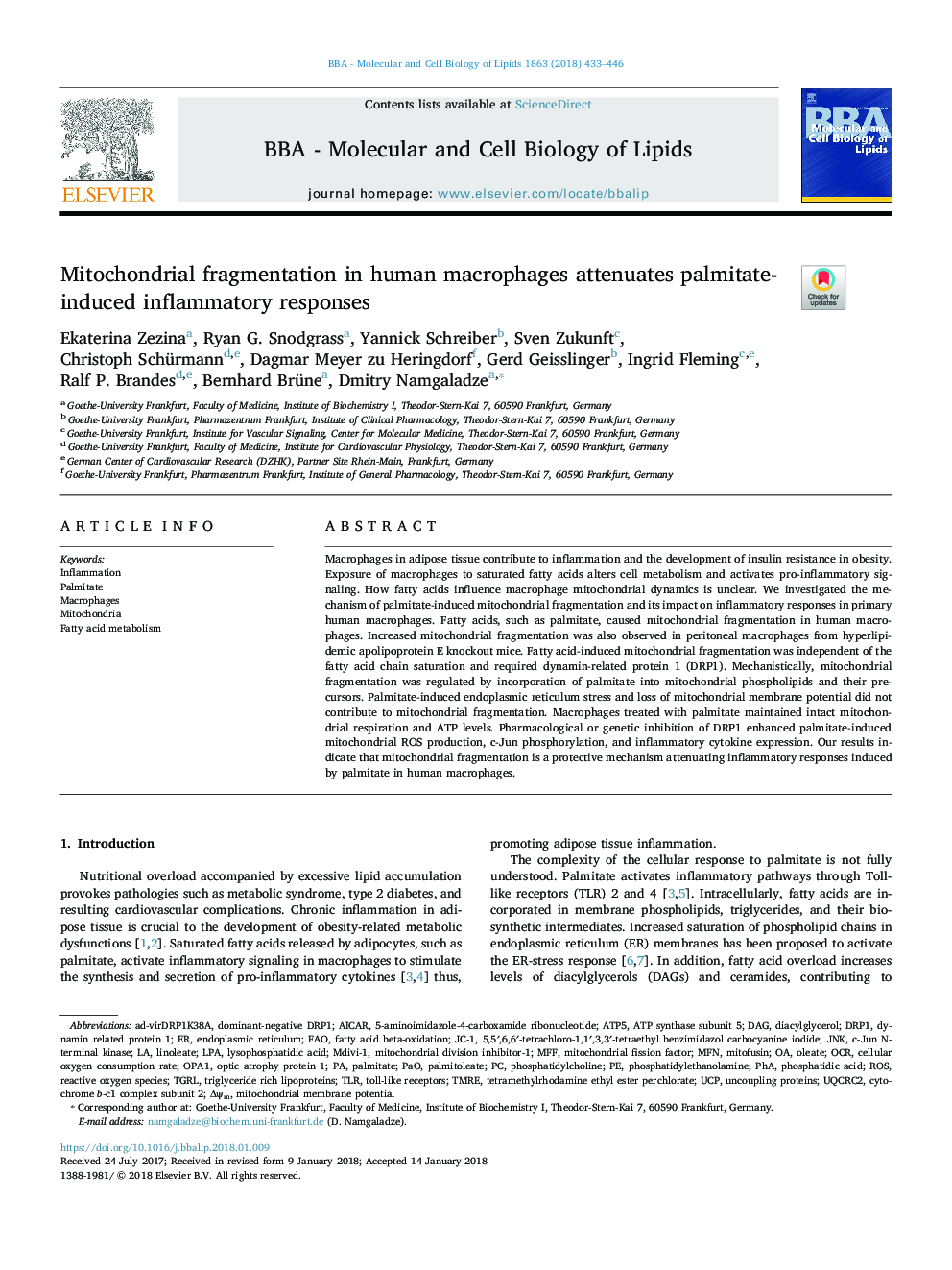| Article ID | Journal | Published Year | Pages | File Type |
|---|---|---|---|---|
| 8301382 | Biochimica et Biophysica Acta (BBA) - Molecular and Cell Biology of Lipids | 2018 | 14 Pages |
Abstract
Macrophages in adipose tissue contribute to inflammation and the development of insulin resistance in obesity. Exposure of macrophages to saturated fatty acids alters cell metabolism and activates pro-inflammatory signaling. How fatty acids influence macrophage mitochondrial dynamics is unclear. We investigated the mechanism of palmitate-induced mitochondrial fragmentation and its impact on inflammatory responses in primary human macrophages. Fatty acids, such as palmitate, caused mitochondrial fragmentation in human macrophages. Increased mitochondrial fragmentation was also observed in peritoneal macrophages from hyperlipidemic apolipoprotein E knockout mice. Fatty acid-induced mitochondrial fragmentation was independent of the fatty acid chain saturation and required dynamin-related protein 1 (DRP1). Mechanistically, mitochondrial fragmentation was regulated by incorporation of palmitate into mitochondrial phospholipids and their precursors. Palmitate-induced endoplasmic reticulum stress and loss of mitochondrial membrane potential did not contribute to mitochondrial fragmentation. Macrophages treated with palmitate maintained intact mitochondrial respiration and ATP levels. Pharmacological or genetic inhibition of DRP1 enhanced palmitate-induced mitochondrial ROS production, c-Jun phosphorylation, and inflammatory cytokine expression. Our results indicate that mitochondrial fragmentation is a protective mechanism attenuating inflammatory responses induced by palmitate in human macrophages.
Keywords
MFFDrp1JC-1TLRLPAΔΨmMdivi-1MFNOCRPalmitoleateTriglyceride rich lipoproteinsTMREUCPTGRLPAOPHAUQCRC2Jnk5-aminoimidazole-4-carboxamide ribonucleotideAICARmitochondrial division inhibitor-1c-Jun N-terminal kinaseopa1ROSphosphatidic acidlysophosphatidic acidinflammationOleateFatty acid beta-oxidationtetramethylrhodamine ethyl ester perchlorateUncoupling proteinsdiacylglycerolDAGendoplasmic reticulumpalmitateFAOmitochondrial fission factorphosphatidylcholinephosphatidylethanolamineLinoleateMacrophagesFatty acid metabolismMitofusinMitochondriaMitochondrial membrane potentialoptic atrophy protein 1dynamin related protein 1Reactive oxygen speciesToll-like receptors
Related Topics
Life Sciences
Biochemistry, Genetics and Molecular Biology
Biochemistry
Authors
Ekaterina Zezina, Ryan G. Snodgrass, Yannick Schreiber, Sven Zukunft, Christoph Schürmann, Dagmar Meyer zu Heringdorf, Gerd Geisslinger, Ingrid Fleming, Ralf P. Brandes, Bernhard Brüne, Dmitry Namgaladze,
